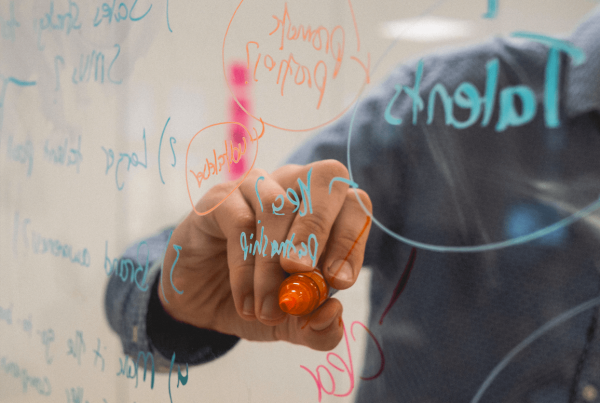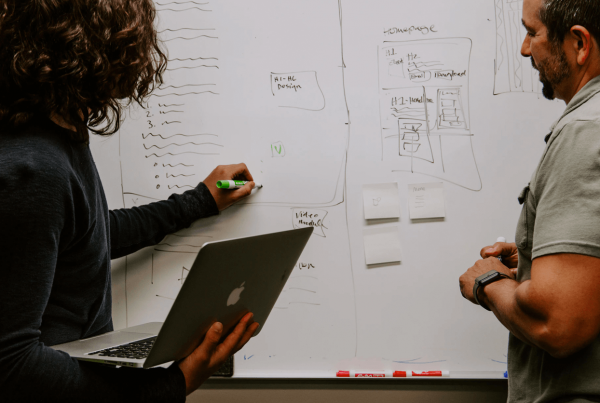“By visualizing information, we turn it into a landscape that you can explore with your eyes, a sort of information map. And when you’re lost in information, an information map is useful.”
– David McCandless
Data visualization is an incredibly powerful tool. It turns numbers to shapes & percentages into works of art. And there’s a LOT of data out there to process. In fact – every 2 days, we generate more information than we’ve cumulatively amassed from the beginning of human history up until the year 2008. But how do we make sense of visualized data, and why is it such a powerful method to convey complex ideas? How can you uncover its strengths to help you illuminate – and achieve – your organization’s goals? Let’s dig a little.
The human brain interprets visual data more rapidly than raw data.
Our brains devote an enormous amount of energy to visual processing. Visual processing actually requires far more energy than tactile (touch) or audio (hearing) processing. It makes sense, right? In order for us to survive as a species, we’ve needed to be able to rapidly notice, assess and respond to peripheral movements from nearby predators; the way our brains process things visually could literally mean life or death. We’ve kept that same incredible ability to rapidly (60,000 times more rapidly than text processing, in fact) detect visual cues and make sense of the patterns in front of our eyes. In the time-crunched world we live in, it’s important to present information in the most succinct, easily-digestible format possible. Data visualization aids in the decision-making process because processing takes less time – the less time you need to process, the faster you and those around you will reach consensus.
Understanding happens quickly and intelligently.
Your team needs the ability to quickly dive into the data to see where they can improve operational processes, grow and pivot without risk. When you do this with visuals, you allow others to truly understand the information that’s often hiding in the numbers. You’ll move from a blank slate to the understand/do phase. You’ll know what questions to ask. You’ll know where the growth opportunities are – and can act on them as soon as they’re spotted. At OneSpring, we help our customers do this with powerful visualization tools that connect to hundreds of data sources, simplify the data prep process and allow us to drive ad hoc analysis. Using tools like this to help your team visualize vast quantities of raw data is what will give you the momentum you need to make decisions with confidence. Visualization not only means speed – it means accuracy, as well.  (Image source)
(Image source)
Visualization helps you monitor & optimize your strategy.
You’ve pulled the numbers. You’ve organized them in a visually-compelling way. You and your team have gained clarity/consensus, and then developed a solid strategy based upon what you’ve seen. Now what? The beauty of using data visualization is that you can consistently access your data and monitor your strategy as you go along. Visualization enables you to monitor your new data-driven decisions in real-time, at the drop of a hat, so you can continuously keep tabs on performance and business outcomes. Data visualization allows you interpret not only data, but strategic results as well – so you can optimize and course correct as you go.




